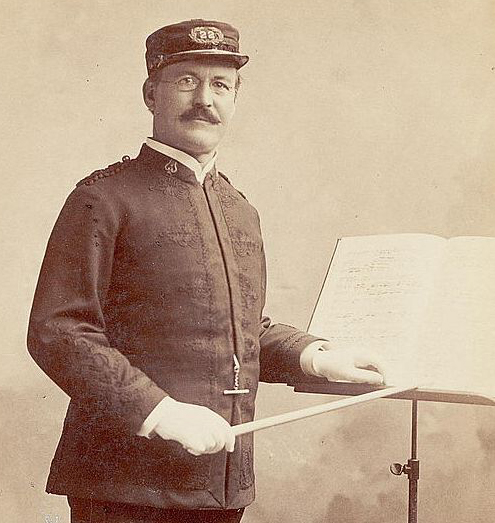Johnny I Hardly Knew Ye
Traditional, first published 1867
When Johnny Comes Marching Home
Patrick S. Gilmore, 1863 |

(Play "When Johnny Comes Marching Home" first.)
 |
Who do you think sang "When Johnny Comes Marching Home"? Does it sound like a song of the North or the South? |
 |
"When Johnny Comes Marching Home" was written in 1863. How did the situation look to each side at that point during war? |
 |
What purpose do you think this song was meant to serve? Whose morale might be boosted by this song? What particular words or music seem calculated to raise morale? |
(Play "Johnny I Hardly Knew Ye")
 |
This is the Irish folk song that inspired "When Johnny Comes Marching Home." Why do you think it was sung during and after the Civil War? Who might have sung it? (Explain the primitive nature of surgery in the mid-1800s: amputation was the only way to treat severe wounds or wounds that became infected, which was common in the days before antiseptics and antibiotics.) |
 |
What different situations did veterans face after the war? |
 |
Besides missing limbs, what problems might returning soldiers have readjusting to civilian life? |
 |
How did the government deal with returning veterans? What happened to Confederate veterans? |
 |
What problems have veterans of other wars faced when they've returned? What do the government and citizens owe returning veterans? |
|

"When Johnny Comes Marching Home" performed by Bonnie Hamilton on Songs of the Civil War, New York: New World Records [NW202], © 1986. Available on iTunes and Spotify.
The recommended recording for this song features a solo voice, accompanied by a piano, with other women joining her on the refrain, "Hurrah, Hurrah." This performance brings to mind a group of women settled around a piano, singing to boost their morale while waiting for the men to return from the war.
"Johnny I Hardly Knew Ye," performed by Janis Ian on Song of America, Thirty One Tigers, © 2007. Available on iTunes, Spotify and YouTube.
Janis Ian's performance is haunting and easily communicates the grief combined with horror that a young woman might feel when seeing her lover return from war seriously wounded. For more information on Janis Ian, visit her website. |

View the lyrics for "When Johnny Comes Marching Home."
View the published score.
View the music and lyrics for "Johnny I Hardly Knew Ye." |
|

 |
Patrick S. Gilmore, three-quarter length portrait, standing, facing slightly right, wearing music conductor uniform. [Between 1890 and 1920?] Photograph. Retrieved from the Library of Congress, <www.loc.gov/item/99471795/>. |
The contrast between these two songs, which share a melodic line and structure, could not be greater. A traditional Irish song, "Johnny I Hardly Knew Ye" was first published in London in 1867, but the lyrics suggest a much earlier conception. The mention of the Island of Sulloon in the earliest versions of this song refers to Ceylon (now Sri Lanka) where Irishmen fought for the British in the early nineteenth century to protect the interests of the East India Company. The lyrics express the emotions of a young wife upon her husband's return from war, in a manner that pleads for non-violence and an end to all wars.
Patrick S. Gilmore, bandmaster of the Union Army, adapted the song in 1863 with a much more optimistic text and upbeat rhythms. These changes made "When Johnny Comes Marching Home" popular on both sides of the Mason-Dixon line.
|

laurel wreath: In mythology, the ornament worn upon a hero's head.
Jubilee: An occasion of joyful celebration or general rejoicing, also the Emancipation |

Compare this song to:
"Song of the Southern Volunteer" (in this unit) |
|


